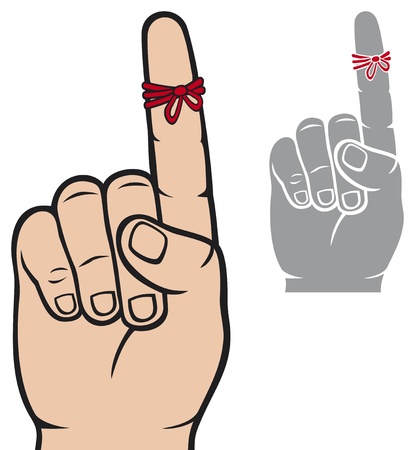1. Introduction to Life Line in Indian Palmistry
In Indian palmistry, the life line holds a significant place as one of the most observed and discussed lines on the palm. Known locally as the Jeevan Rekha, this line is often believed to reveal essential insights about a person’s longevity, vitality, and general health. Unlike some Western interpretations that might focus solely on age prediction, Indian traditions consider the life line a reflection of both physical and spiritual well-being. Families and individuals across India have long sought guidance from experienced palmist practitioners, or hast rekha visheshagya, to understand what their life line might suggest about their future. This cultural emphasis is rooted in a holistic perspective where age and health are seen as interconnected aspects of one’s karma, lifestyle, and destiny. Whether it appears short or long, thick or faint, the life line is not just a simple marker of years but a dynamic indicator shaped by various factors unique to each individual. Understanding its true meaning requires looking beyond superstitions and appreciating how Indian palmistry blends ancient wisdom with practical advice for living a balanced life.
2. Short Life Line: Myths and Reality
In Indian palmistry, the life line is often a topic of curiosity, especially when it appears short. Many believe that a short life line directly means a short life span, but this is a misconception rooted in myth rather than traditional Indian palmistry wisdom. Let us clarify what a short life line truly reveals about age, health, and wellness.
Common Myths About Short Life Line
| Myth | Reality |
|---|---|
| If your life line is short, you will have a short life. | Length does not solely determine life span; other lines and mounts are also considered. |
| A break or faintness in the line always signals danger or fatal illness. | Breaks can indicate challenges or changes, not necessarily threats to life. |
| Short life line means poor luck in all areas of life. | Luck and fortune are seen in other lines such as the fate and sun lines. |
What a Short Life Line Actually Indicates
- Vitality and Energy: In Indian palmistry, the length of the life line often shows the strength of ones physical energy or resistance to illness, not just years lived.
- Lifestyle Factors: Sometimes, a shorter life line suggests periods of stress or lifestyle changes. It may invite you to pay more attention to health habits like diet, exercise, and sleep.
- Influence of Other Lines: The presence of supportive lines (like Mars line or sister lines) can strengthen the meaning of the life line and reduce concerns over its length.
Key Takeaway for Indian Context
Palmistry practiced across India emphasises holistic analysis. A short life line should not be feared; instead, it should encourage self-care and awareness. Always consult an experienced palmist who understands Indian traditions for a balanced interpretation.

3. Long Life Line: What Does It Signify?
In Indian palmistry, the length and clarity of the life line are often considered crucial indicators of a person’s overall vitality and well-being. When examining a long life line, traditional interpretations suggest that it is an auspicious sign, especially in the context of health and longevity.
Symbolism of a Long Life Line in Indian Culture
A long and well-marked life line is believed to reflect robust physical health, enduring stamina, and the potential for a lengthy life. In many Indian households, elders often say that such a line signifies “achha swasthya” (good health) and “lambi umar” (long life), reinforcing positive expectations for the individual. This interpretation aligns with cultural values that prize resilience and vitality as blessings from destiny or karma.
Vitality and Resilience
The traditional Indian view holds that a prominent, unbroken life line denotes not just physical strength but also emotional resilience. A person with this feature is thought to possess the inner resources to overcome difficulties, recover from illnesses, and adapt to changing circumstances—qualities highly respected in Indian society.
Misconceptions about Longevity
It is important to clarify that while a long life line is commonly associated with a longer lifespan, experienced palmist practitioners in India emphasize that it does not guarantee immortality or freedom from all health problems. Instead, it reflects general constitutional strength and resistance to disease. Factors like lifestyle choices, environment, and mental attitude also play significant roles in one’s actual health outcomes.
Cultural Nuances in Interpretation
In India, palmistry readings are often accompanied by guidance rooted in Ayurveda or holistic wellness traditions. A long life line may be interpreted alongside other lines on the palm—such as the head and heart lines—to give a more comprehensive picture of an individual’s health prospects. Thus, while the long life line carries optimistic meanings, its significance is always contextualized within the broader tapestry of the hand.
4. Other Health Indicators on the Palm
In Indian palmistry, while the Life Line is a key focus for evaluating age and health, experienced palmists also observe other lines and signs on the palm to gain a comprehensive understanding of a persons physical condition. These additional indicators provide valuable insights into specific areas of health, vitality, and potential challenges. Below, we explore some of the most important signs and their meanings as per traditional Indian practices.
Major Health-Related Lines in Indian Palmistry
| Line/Sign | Local Indian Name | Health Interpretation |
|---|---|---|
| Head Line | Mastishk Rekha | Indicates mental health, stress levels, and risk of headaches or neurological issues. |
| Heart Line | Hridaya Rekha | Relates to emotional well-being and heart-related health issues such as blood pressure. |
| Liver Line (Mercury Line) | Budh Rekha | Reflects digestive health, liver function, and nervous system strength. |
| Mount of Venus | Shukra Parvat | Represents overall vitality, immunity, and reproductive health. |
| Girdle of Venus | Venus Ki Patli Rekha | Associated with nervous temperament and potential hormonal imbalances. |
Common Signs Observed by Indian Palmists
- Islands or Breaks: Small circles or breaks on any line may indicate periods of illness or weakness in that aspect of health.
- Crosses: Cross marks on the Life Line or other major lines can suggest accidents or sudden health setbacks.
- Chains: A chained appearance on the Life Line often points to chronic health issues or fluctuating energy levels.
- Dots: Small dots are considered warning signs for acute illnesses or temporary but intense health problems.
- Pale Palm Colour: In Ayurveda-inspired readings, a pale palm is sometimes linked to low vitality or anemia (rakta ki kami).
- Deep vs. Shallow Lines: Deep, clear lines are seen as signs of robust health; shallow or faint lines might indicate weak constitution or lack of prana (life energy).
Cultural Perspective: The Holistic Approach in Indian Palmistry
Indian palmists believe that each hand tells a unique story influenced by hereditary factors (karmic baggage), lifestyle habits, and even spiritual outlook. For instance, the right hand is often read for active karma and current life path (especially in men), while the left hand reveals inherited traits and potential (especially in women). Therefore, multiple signs together—rather than a single indicator—are used to make a balanced judgment about ones health and longevity.
This holistic approach ensures that predictions are not just about lifespan but also about quality of life, resilience during illness, and overall wellness, which resonates deeply with Indian values around family wellbeing and spiritual growth.
5. Cultural Beliefs & Local Sayings about Palm Lines
In Indian palmistry, the meaning of short and long life lines is deeply intertwined with local culture and traditional wisdom. Across different regions of India, people often refer to popular sayings such as “Rekhaon mein likhi hai zindagi” (Life is written in the lines), highlighting the strong belief that destiny and health are etched on one’s palms. A long, clear life line is commonly associated with robust health, longevity, and a life blessed by the gods. Conversely, a short life line does not automatically mean a short lifespan; in many villages, elders say, “Choti rekha, bada hausla” (Short line, big courage), suggesting that determination can overcome any fate indicated by the palm.
Regional variations abound. For instance, in South India, it is believed that the thickness of the life line matters more than its length—if the line is deep and well-marked, it signifies vitality regardless of its span. In contrast, North Indian traditions may focus on how the life line interacts with other lines, such as the head or heart lines, to interpret periods of illness or good fortune. In Gujarat and Rajasthan, people often quote proverbs like “Haath ki lakeer nahi badalti, par mehnat sab kuch badal deti” (Lines on the hand do not change, but hard work changes everything), emphasizing personal effort over fate.
Another popular belief across rural India is that breaks or chains in the life line are warnings to take better care of health rather than certain predictions of misfortune. Elders might advise young people to wear specific stones or perform rituals to strengthen their shakti (inner power) if their life line appears weak. These cultural interpretations reflect an optimistic outlook: while palmistry offers guidance, destiny can be shaped by faith and action. Ultimately, Indian palmistry is not just about reading lines—it is about connecting age-old wisdom with daily life and local values.
6. Practical Tips: Consulting a Palm Reader in India
Finding an Experienced Palmist
When seeking insights about your life line—whether it is short, long, or unique—it is crucial to approach a knowledgeable and experienced palmist. In India, palmistry has deep cultural roots, and many skilled practitioners can be found in temples, local markets, or through family recommendations. Consider looking for a palmist who has a good reputation within your community, positive client feedback, and ideally, certification from a recognized institute of astrology or palmistry.
Understanding the Consultation Process
The consultation typically begins with a respectful greeting, as per Indian tradition. You may be asked to wash your hands before the reading—a gesture that signifies purity and respect for the process. The palmist will closely examine your dominant hand (often the right hand for men and left for women according to Indian customs) to interpret the life line along with other major lines. Expect questions about your background and current concerns, as this helps the palmist offer more personalized guidance regarding age predictions and health indicators shown by your life line.
During the Session
- Stay open-minded but discerning; not every prediction should be taken at face value.
- If you feel uncomfortable with any advice—especially regarding health—consult a medical professional as well.
- Feel free to ask questions about remedies or rituals commonly suggested in Indian palmistry, such as wearing specific gemstones or performing certain pujas (prayers).
Tips for Seekers
- Be respectful and patient during the session; traditional palmists appreciate humility.
- Record the session (with permission) so you can reflect on the advice later.
- Understand that palmistry offers guidance rather than guarantees; treat it as one part of your self-discovery journey.
Consulting a palmist in India is more than just reading lines—it is an exchange rooted in culture, tradition, and trust. By choosing the right practitioner and approaching the experience with an open mind, you can gain valuable insights into your age and health indicators according to Indian palmistry wisdom.


